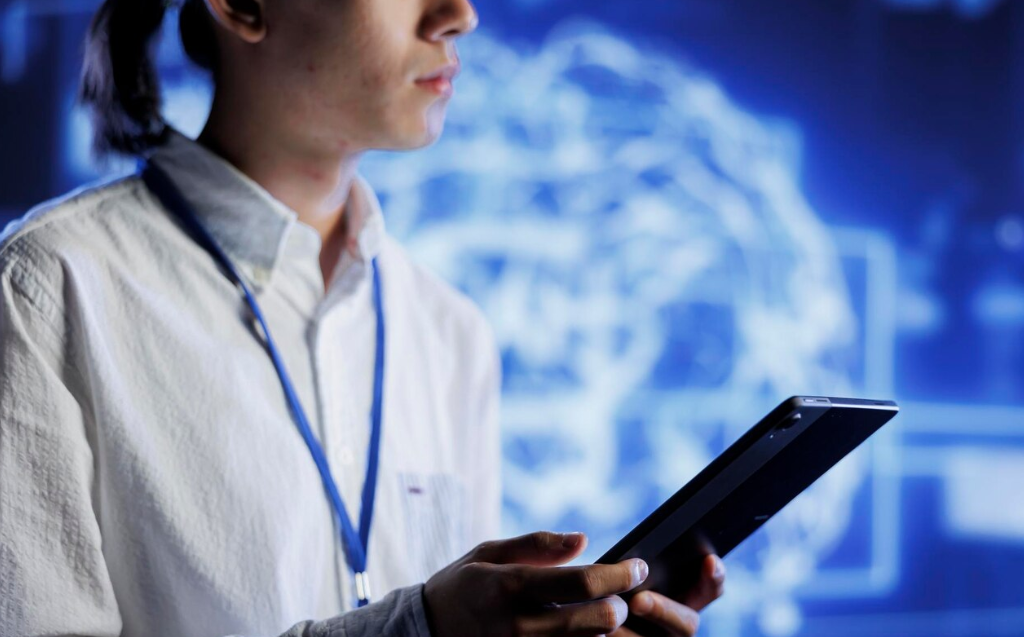Disasters, whether natural or man-made, have devastating impacts on communities, economies, and the environment. The ability to effectively manage and respond to disasters is crucial in minimizing loss of life, property damage, and long-term repercussions. In recent years, Artificial Intelligence (AI) has emerged as a transformative tool in disaster management and relief coordination. By harnessing AI technologies, authorities and relief organizations can respond more efficiently, save lives, and optimize resource allocation during times of crisis.
This article explores the ways AI is revolutionizing disaster management and relief efforts, from predicting and assessing disasters to improving coordination in the aftermath.
How AI is Enhancing Disaster Prediction and Preparedness
One of the key areas where AI is making a significant impact is in disaster prediction and preparedness. Historically, predicting natural disasters such as hurricanes, earthquakes, and floods has been a complex and uncertain task. However, advancements in AI are enabling more accurate forecasting and early warning systems that help save lives and mitigate damage.
1. Predictive Analytics for Early Warning Systems
AI algorithms can analyze vast amounts of data from multiple sources, including satellites, weather stations, and sensors, to identify patterns and trends that indicate the likelihood of an impending disaster. Machine learning (ML) models, a subset of AI, can improve their accuracy over time by learning from past events and data.
- Flood forecasting: AI can analyze weather data and topography to predict flood risks, providing real-time alerts to at-risk populations.
- Earthquake prediction: While predicting earthquakes with absolute certainty remains a challenge, AI models can identify seismic patterns and anomalies that may indicate a higher likelihood of an earthquake occurring in a specific region.
- Storm tracking: AI is used in meteorology to enhance storm tracking, particularly for hurricanes and tornadoes, by analyzing weather patterns and satellite imagery to predict the storm’s path and intensity.
With early warnings in place, governments and citizens can take proactive measures, such as evacuations and infrastructure reinforcement, to reduce the impact of disasters.
2. Simulation and Scenario Modeling
AI-powered simulations are increasingly being used to model disaster scenarios and simulate potential outcomes. These models help emergency planners understand the scope of disasters and the best strategies for response.
- Evacuation planning: AI can simulate crowd movements during evacuations, helping authorities design more efficient evacuation routes and reduce congestion.
- Infrastructure vulnerability assessment: AI can model the impact of various disaster scenarios on infrastructure, such as buildings, roads, and bridges, helping planners strengthen critical infrastructure before a disaster strikes.
These simulations allow governments and organizations to be better prepared and have contingency plans ready when disaster strikes.
Optimizing Relief Coordination with AI
In the aftermath of a disaster, relief efforts must be well-coordinated to ensure that resources are distributed efficiently, and affected communities receive the support they need. AI is proving to be an essential tool in relief coordination, enabling authorities and aid organizations to respond more quickly and effectively.
1. Resource Allocation and Logistics
Disasters often result in an overwhelming need for resources, such as food, water, medical supplies, and shelter. AI can be used to optimize the allocation and distribution of these resources, ensuring that they reach those in need as quickly as possible.
- Supply chain optimization: AI can track inventory levels and predict the demand for various resources, helping relief organizations plan and prioritize deliveries.
- Route optimization: AI-powered systems can determine the most efficient routes for delivering aid, taking into account factors like road conditions, traffic, and weather. This is particularly important in areas with damaged infrastructure or impassable roads.
By using AI to optimize logistics, relief efforts become more efficient, minimizing delays and maximizing the impact of available resources.
2. Real-Time Damage Assessment
Assessing the extent of damage after a disaster is essential for determining where resources should be deployed. Traditionally, this has been a time-consuming process, with teams of assessors needing to visit disaster sites in person. AI, particularly through the use of drone technology and computer vision, is changing this dynamic by providing faster and more accurate damage assessments.
- Drone surveillance: Drones equipped with cameras and AI can fly over disaster areas to capture high-resolution images and videos. AI algorithms can analyze these images to identify areas of significant damage, such as collapsed buildings, flooded regions, and damaged infrastructure.
- Satellite imagery: AI can process satellite images to quickly assess the scale of damage in affected areas. Machine learning algorithms can automatically identify changes in land cover, such as flooded areas or destroyed buildings, helping response teams prioritize their actions.
These real-time assessments allow for rapid decision-making, enabling more targeted relief efforts.
3. Chatbots and Virtual Assistants for Communication
Effective communication is crucial during disaster response. AI-powered chatbots and virtual assistants can provide real-time updates, answer questions, and facilitate communication between affected communities, relief organizations, and government authorities.
- Disaster relief hotlines: AI-powered chatbots can manage the influx of calls and messages from affected individuals, providing them with critical information, such as evacuation routes, shelter locations, and emergency contacts.
- Information dissemination: AI can be used to send automated updates about weather conditions, safety instructions, and relief efforts to those in need through text messages, social media, and other communication channels.
AI-powered communication tools help keep communities informed, reduce panic, and ensure that people receive timely assistance.
The Role of AI in Disaster Recovery and Long-Term Resilience
While AI plays a crucial role in disaster response, its impact extends beyond immediate relief efforts. In the recovery phase, AI can support long-term resilience and help communities rebuild more sustainably.
1. Damage Assessment and Reconstruction Planning
After a disaster, AI can assist in identifying the most efficient and sustainable ways to rebuild infrastructure and communities.
- AI-driven design tools: AI-powered design tools can assist architects and urban planners in creating disaster-resistant buildings and infrastructure, taking into account factors like earthquake resistance, flood prevention, and climate resilience.
- Damage modeling: AI can help assess the structural integrity of buildings and infrastructure, allowing reconstruction teams to prioritize critical repairs and ensure that new structures are more resilient to future disasters.
AI’s ability to analyze complex data and make predictions is crucial for rebuilding communities in ways that minimize future disaster risks.
2. Community Empowerment and Engagement
AI can also be used to engage and empower communities in disaster recovery efforts. Through mobile apps and social platforms, AI can help affected individuals stay connected with relief organizations, report damages, and offer feedback on recovery efforts.
- Crowdsourced data: AI can analyze crowdsourced data from affected communities, such as photos and reports, to identify areas that require attention and resources.
- Local recovery efforts: AI can help communities plan and implement local recovery initiatives, ensuring that rebuilding efforts are aligned with the needs and preferences of those affected.
By involving communities in the recovery process, AI fosters local resilience and empowers individuals to contribute to rebuilding their own neighborhoods.
Challenges and Ethical Considerations
While the potential of AI in disaster management is immense, several challenges and ethical considerations must be addressed:
- Data privacy: The use of AI in disaster management often requires collecting large amounts of personal data, such as location data and health information. Ensuring that this data is collected and used ethically is critical to maintaining trust in AI systems.
- Bias in algorithms: AI algorithms can inadvertently perpetuate biases, especially if they are trained on biased data. Ensuring that AI systems are fair and impartial in their decision-making is essential for effective disaster management.
- Access to technology: In some regions, access to AI-driven solutions may be limited due to infrastructure challenges or lack of resources. Ensuring that AI benefits are accessible to all communities, including those in developing countries, is important for achieving equitable disaster relief.
Conclusion
AI is fundamentally transforming disaster management and relief coordination by enhancing disaster prediction, optimizing relief efforts, improving communication, and supporting long-term recovery. Through the use of AI-driven tools like predictive analytics, drone surveillance, chatbots, and real-time damage assessment, disaster responders can act faster, more efficiently, and more effectively, ultimately saving lives and reducing the impact of disasters.
While challenges remain, such as data privacy and equitable access to technology, the future of AI in disaster management holds tremendous promise. As AI continues to evolve, its role in building more resilient and adaptive communities will become increasingly vital in mitigating the effects of future disasters.


